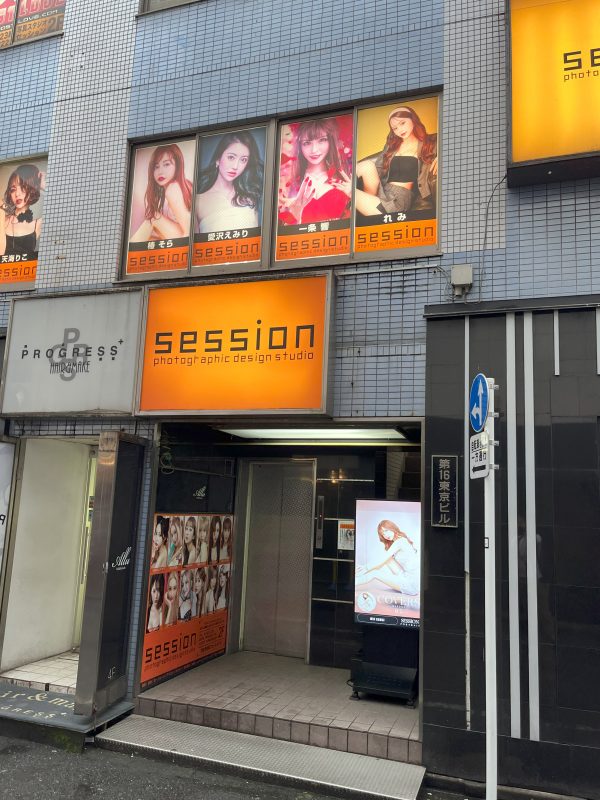At the heart of Japan’s entertainment districts lie a marketplace, both above ground and deep underground, where young women are displayed like livestock: measured, prodded, appraised, then bought and consumed behind closed curtains, all as part of cities’ nightly routine.
Until recently, the prevailing narrative was that women – often young and heavily indebted – turned to street prostitution out of financial desperation. But that explanation no longer holds. What Japan is witnessing now is something far more widespread: a genuine social epidemic, triggered by the breakdown of a long-standing taboo. Shame is no longer a deterrent. The sheer number of girls involved has normalized the practice, making it appear, to some, like just another job.
Its hard to say how many women are working in the sex trade, which remains illegal in Japan. Arrests have increased in recent years, with 88 reported in 2024 (January–November), 95 in late 2023, and 80 from January to September 2023, compared to 51 in 2022. But these figures likely represent only a fraction of the total activity due to enforcement challenges and the hidden nature of the practice.
****
As I slipped down a narrow stairway in Kabukicho in central Tokyo, I could faintly smell the damp carpet. At the bottom, a man with long hair and a pockmarked face greeted me with a glance. A small silver earring swung from one ear; his white shirt was crisp.
“No foreigners,” he said flatly in Japanese-accented English.
“Why not?” I asked him in Japanese.
That threw him off. He blinked, then nodded. “If you speak Japanese… then, it’s okay.”
I wondered what language proficiency had to do with it. I would have my answer soon enough.
He pulled out a laminated sheet, cloudy with fingerprints. The “system” was laid out like a fast-food menu: 2,500 yen (around $18) for membership. Another 2,500 yen just to enter. Then, I would set the price with the girl (that is why Japanese was required) and if I wanted to leave with her, I would owe the house an additional 2,500 yen.
“What’s inside?” I asked, gesturing toward a heavy curtain with a single bulb glowing above it.
He shrugged. “You pay. Then see.”
I handed him the cash. He gave me a membership card with a serial number printed in red. No name. Just a number.
Behind the curtain was a dim room with a single, low sofa and a pane of mirrored glass. Behind that, two women were sitting, backlit. They couldn’t see me, but I could see them. One was curled up slightly, the other was tapping her phone in rhythm against her crossed leg. Neither looked up.
Confused about what was supposed to happen next, I stepped back outside. The man was waiting.
“Which one?”
I pointed to the girl on the left.
He nodded, unlocked a side door, and guided me to a small room with beige wallpaper and a glass table. “Ten minutes,” he said. Then he disappeared.
The girl walked in wearing a pink frilly dress, something between cosplay and uniform. Her expression was flat. She said “konbanwa” – good evening – without the faintest trace of warmth. She was already sitting before I could speak.
“How old are you?” I asked, trying to sound neutral.
“Twenty,” she said.
I asked her how long she had been doing this. “A year,” she replied.
“Why?”
“Money.”
“Money? You need that much?” She didn’t answer.
I asked what was wrong with a regular part-time job. “How much do they pay?” she asked. I know the answer: less than 1,200 yen ($8) an hour.
Then she added, almost as an afterthought, “So many girls are doing this now.”
She was right. This very establishment is a sort of chain. With the membership card I just acquired I can access dozens of others, all within a 100 square meter area. They all look pretty much the same, with tens of girls coming and going every single hour of the day.
I asked if she had any plans to do something else, but she just looked past me, as if too tired or too resigned to respond. Instead, she said the service is 20,000 yen.
I tried other questions – about her daily life, if she talks to her family, if she studies or works elsewhere – but it was no use.
She answered with shrugs, silence, the occasional “wakannai” – I don’t know – all said without even looking at me.
My ten minutes passed by and I remembered I hadn’t even asked her name.
“Haruka,” she said.
When I left, she didn’t say goodbye.
The man outside asked me if I wanted another girl. I shook my head and walked up the narrow stairs, back into lit chaos of the street. At the same time, a middle aged-man, about 55 years old, wearing a mask, came down the very same stairs.
I waited 15 minutes outside, curious to see who would emerge next. Eventually, I saw Haruka step out, followed closely by the middle-aged man I’d seen earlier. They walked together, disappearing into the chaotic crowds.
****
Establishments like this cannot legally offer sex for pay – but for a fee, as the man downstairs had told me, men can leave with a girl. The implied reason is to find another location for a sexual encounter.
For the next three nights, I returned to this very spot, witnessing the same pattern dozens of times: a young, seemingly vulnerable girl alongside a jovial, smiling man old enough to be her grandfather. This isn’t rare. This is now part of the everyday fabric of life in Japan’s largest city.
Within just a few blocks there are dozens of such establishments where hundreds of young women, many barely out of their teens, sell their bodies. And they do it not as part of a fringe economy, but as a normalized, loosely regulated extension of the entertainment industry.
This happen every single day, every single hour. The mornings, starting at 5 a.m., are the busiest, they tell me. It’s a quiet machinery that never stops.
It looks innocuous at first: rows of young women standing beneath the electric glow of Kabukicho hold placards like price tags, but they are offering not their bodies, but the illusion of intimacy: a chat over a drink in a themed cafe, a moment of attention, nothing more. But beneath that veneer of plausible deniability, at many of these locations sex is sold openly, efficiently, and routinely. It is not even hidden, just reframed.
“What was once tucked away in the shadows of host clubs or relegated to desperate corners of nightlife has quietly transformed into a vast, systematic ecosystem, one that now entraps students, daughters of broken households, and girls barely out of adolescence,” Kosugi, head of a local crime prevention association branch, told me.
The transactional sex trade in Japan is no longer subcultural or stigmatized. It is silent, sanctioned by indifference, and disturbingly mainstream.
In the open street next to a park I encountered another girl, 19 years old, dressed in a short skirt. She was standing alongside two others, unmasked, in a setting where many young women openly engage in street prostitution – unlike Haruka in her tiny dark room.
Approaching her cautiously, I asked what she and her companions were doing. She responded casually, “Waiting for clients for a date.”
What does such a date entail?
“Hotel,” she replied matter-of-factly.
To understand her motivations, I asked why she chose this path over a typical part-time job, common among girls her age. Pointing to an expensive brand-name bag, she explained, “So I can buy stuff I want, like this.” Her candidness prompted me to inquire about her family’s awareness of her activities.
She said she left her family home at 18 to attend university in Tokyo, where she studies filmmaking. Now living alone, she has severed contact with her parents. She mentioned a younger sister, so I asked if she’d be comfortable with her sibling following the same path.
“Iinjanai?” – “why not?” – she responded with unsettling nonchalance.
As for her clientele, she described a miscellaneous crowd, primarily Japanese but also Chinese men ranging from their 20s to 50s. She added that many clients request to record their encounters, a service she provides for an extra fee.
****
You can easily infer why in recent years, Japan has experienced a significant surge in sexually transmitted diseases, particularly syphilis, with young women being disproportionately affected. According to data from the National Institute of Infectious Diseases, the total number of syphilis cases in 2023 and again in 2024 reached almost 15,000 cases, the highest figure since 1999 when the current survey method was introduced.
Tokyo, in particular, has seen a notable increase. In 2022, the city reported 3,667 syphilis cases, the highest since record-keeping began in 1999, representing a 50 percent increase from the previous year. As of July 23, 2023, Tokyo had already reported 2,087 cases, about 10 percent more than the same period in 2022.
In Kabukicho today, it’s not unusual to see girls lingering on street corners, scrolling through their phones as they wait. Many of them look barely old enough to be out of high school, their makeup heavy, their skirts short, and their designer bags slung casually over their shoulders.
I struck up a conversation with two of them. They spoke freely, almost nonchalantly, about their lives, mentioning that they each have three boyfriends, as if it were a trophy, and gesturing proudly to their expensive handbags. One of them, who called herself Riko, told me she just graduated from university and now works for a nail salon during the day.
Work as a hostess, she explained, is just a side hustle, an easy way to earn extra cash. She said it without shame, without hesitation. For her and many others, making money this way has never been easier. The taboo once attached to this kind of work seems to have faded, replaced by a kind of casual pragmatism.
“It used to be a prostitution area, but not like it is now,” said a veteran police officer at the police station that stands within a few meters from where all these young women are on display.
“We have seen women as young as 15,” he added.
During the COVID-19 pandemic, the officer said, the girls had totally disappeared only to spring up again three-fold. Police officers often go around warning the girls: “Don’t stand here, move along, abunai! It’s dangerous.”
Sure, they disperse, but within minutes, they’re back again, the policeman told me. “What can we really charge them with?” he said. “Unless we catch them red-handed exchanging money, it’s not a crime to talk to strangers.”
Brick-and-mortar businesses exploit the same loophole, he told me. That includes the establishment where I spoke with Haruka, as well as so-called “soaplands.” These establishments, cloaked in the guise of a traditional bathhouse, are a unique feature of Japan’s sex industry, where clients pay for a bath that often includes intimate services. Originally known as toruko-buro (“Turkish baths”), they actually offered assisted bathing, but many bathhouses began providing sexual services by the late 1950s, exploiting the ambiguity in Japan’s 1956 Anti-Prostitution Law. This law defined prostitution as sexual intercourse with an “unspecified” person, allowing soaplands to frame their services as interactions between “acquainted” parties following a bath or massage, thus evading legal restrictions.
“So there’s no solution?” I asked the police officer.
He met my gaze and simply nodded.
Osaka, at least, is taking a different approach. A narrow alley near the main station, long known for street prostitution, saw a 90 percent decrease in soliciting after it was painted yellow in December 2024. This initiative was based on the “nudge theory,” which posits that subtle environmental changes can influence behavior. The bright color made the women feel conspicuous, effectively deterring them from congregating there.
Like Kabukicho in Tokyo, the alley located near JR Osaka Station had also experienced a surge in prostitution post-COVID-19, leading some residents to move out. Despite police crackdowns, the issue persisted – until the painting initiative, which reduced the average number of women from over seven to fewer than one per day.
However, officials view this as a temporary fix. With the Osaka World Expo ongoing, the city is particularly sensitive to its public image and is now focusing on long-term solutions, connecting women to support organizations to help them exit the trade. The true test, however, will be whether these efforts can be sustained long after the Expo is gone.












